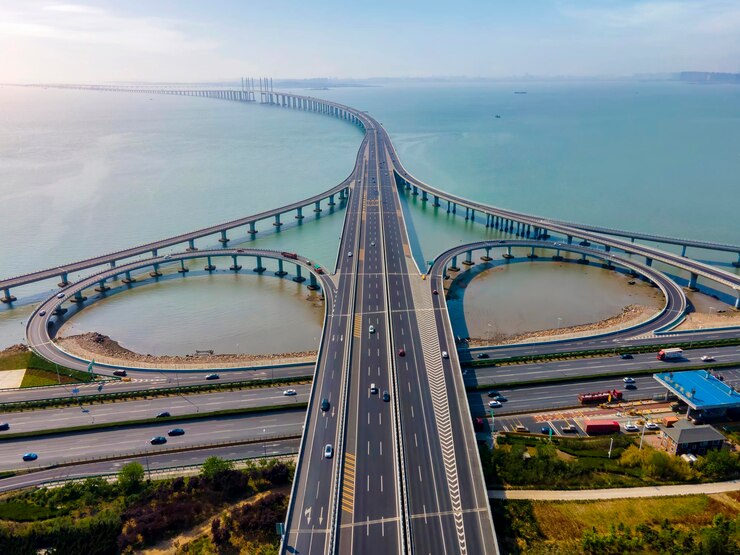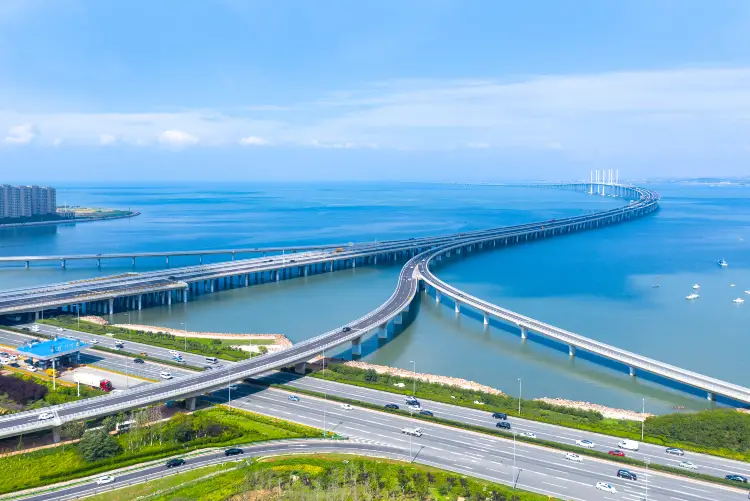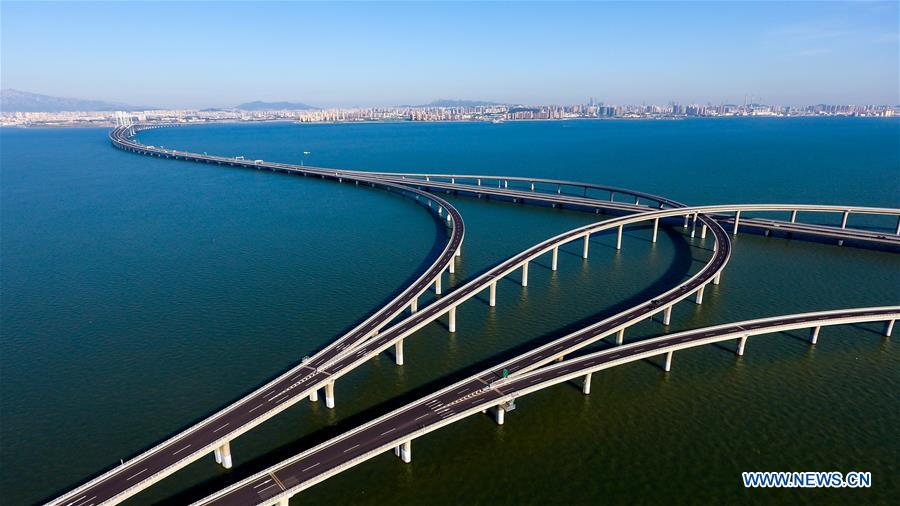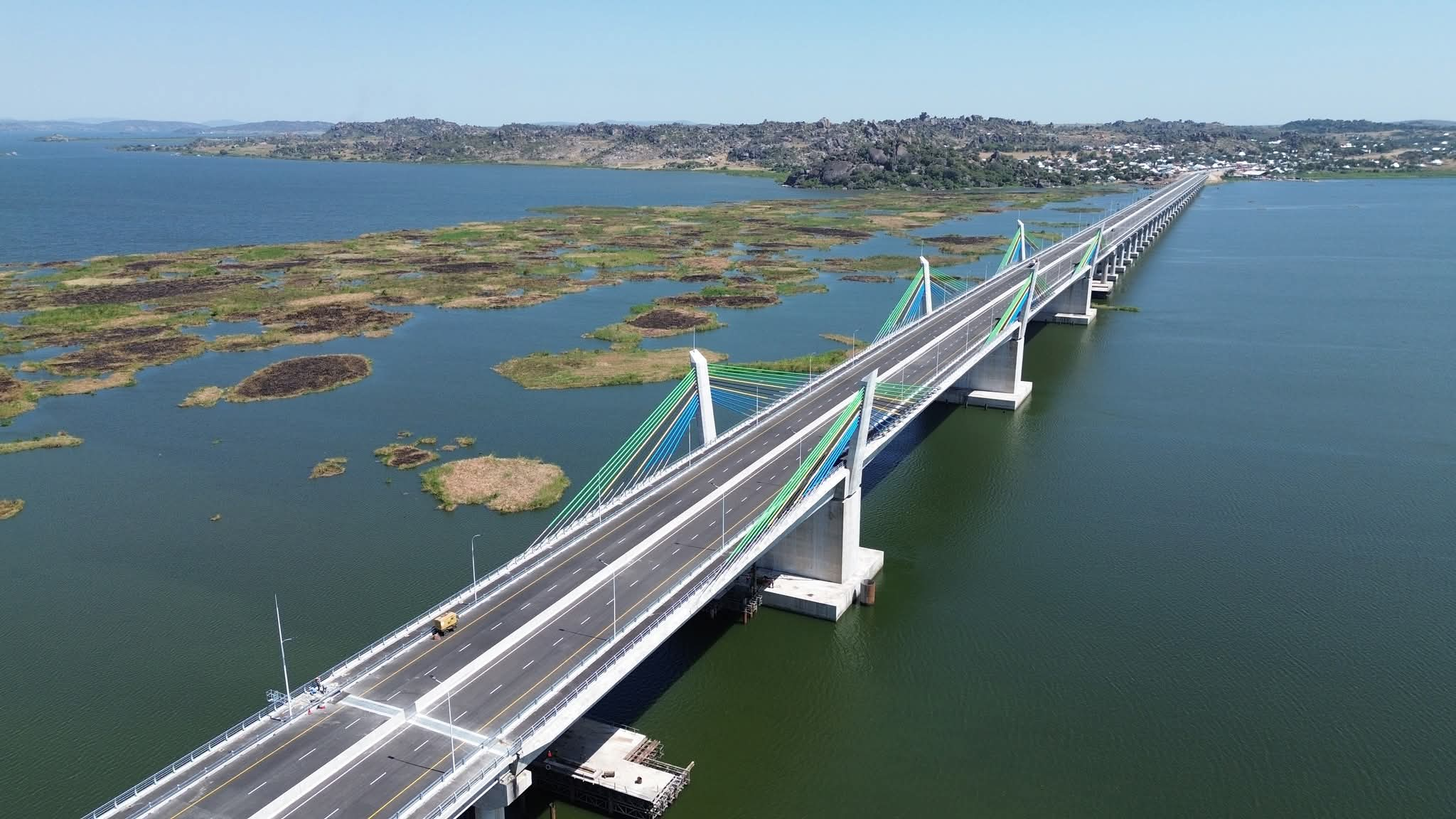AMAZING INFRASTRUCTURE: Qingdao Jiaozhou Bay Bridge, Largest Sea Bridge in the World

Did you know that the Qingdao Jiaozhou Bay Bridge is designed to withstand severe earthquakes, typhoons, and collisions from ships, and its cost is put at between CN¥10 billion (US$1.5 billion) and as high as CN¥55 billion (US$8.8 billion)?
China is home to lots of amazing infrastructures in the world. One of these infrastructures is the Qingdao Jiaozhou Bay Bridge in Qingdao, Shandong province of China. Known as the largest sea bridge in the world, it is part of the 41.58 km (25.84 mi) Jiaozhou Bay Connection Project. The length of the Jiaozhou Bay Bridge is 26.7 km (16.6 mi), of which 25.9 km (16.1 mi), 25.9 km (16.1 mi) are over water, representing the aggregate length of three legs of the bridge, thus making it one of the longest bridges in the world.
The bridge is designed to be able to withstand severe earthquakes, typhoons, and collisions from ships. It is supported by 5,238 concrete piles. The cross section consists of two beams in total 35 m (115 ft) wide carrying six lanes with two shoulders. The bridge builder Shandong Gaosu Group claimed that Jiaozhou Bay Bridge had the first oversea interchange in the world and that it has the world's largest number of oversea bored concrete piles.

The bridge was the idea of a local official in the Chinese Communist Party who was subsequently dismissed for corruption. It was designed by the Shandong Gaosu Group, and it took four years to build, with at least 10,000 people employed. It opened on 30 June 2011 for traffic.
The Qingdao Jiaozhou Bay tunnel opened on the same day as the bridge. It transects Jiaozhou Bay, also connecting Huangdao District and the city of Qingdao, between the narrow mouth of the bay, which is 6.17 km (3.83 mi) wide. The tunnel travels underground for 5.55 km (3.45 mi). It reduces the road distance between Licang District and Huangdao District in Qingdao by 30 km (19 mi), compared with the expressway along the coast of the bay, reducing travel time by 20 to 30 minutes.
The design of the bridge is T-shaped with the main entry and exit points in Huangdao District and Licang District, Qingdao. A branch to Hongdao Subdistrict is connected by a semi-directional T interchange to the main span. The construction used 450,000 tons of steel and 2.3 million cubic metres (81×106 cu ft) of concrete. The bridge has three navigable sections: the Cangkou Channel Bridge to the west, the Dagu Channel Bridge to the east, and the Hongdao Channel Bridge to the north. The 600 metres (2,000 ft) long Cangkou Channel Bridge has the largest span of the entire Jiaozhou Bay Bridge, 260 m (850 ft). The Hongdao Channel Bridge has a span of 120 m (390 ft). The non-navigable sections of the bridge have a span of 60 m (200 ft).
The Jiaozhou Bay Connection Project consists of two non-connected sections: a 35.4 km (22.0 mi)-long expressway that includes the Jiaozhou Bay Bridge and a 6.17 km (3.83 mi)-long expressway that includes the Qingdao Jiaozhou Bay Tunnel. The 35.4 km (22.0 mi) section is further broken into multiple parts: 26.7 km (16.6 mi) - Jiaozhou Bay Bridge of which 25.9 km (16.1 mi) is over water in the aggregate of three legs. 5.85 km (3.64 mi) - Licang District side land bridge. 0.9 km (0.56 mi) - Huangdao District side land bridge; and 1.9 km (1.2 mi) - Hongdao Subdistrict connection.

After the bridge opened, Guinness World Records listed it at 41.58 km (25.84 mi), which made it the longest bridge over water (aggregate length). The Guinness title was later taken by the Hong Kong-Zhuhai-Macau Bridge in October 2018.
Concerns regarding the bridge's safety were raised when Chinese media reported that the bridge was opened with faulty elements, such as incomplete crash-barriers, missing lighting, and loose nuts on guard-rails, with workers stating that it would take two months before finishing all of the projects related to the bridge. Shao Xinpeng, the bridge's chief engineer, claimed that in spite of the safety report, the bridge was safe and ready for traffic, adding that the problems highlighted in the reports were not major.
The bridge was reported by the official state-run television company CCTV to cost CN¥10 billion (US$1.5 billion, GB£900 million). Other sources reported costs as high as CN¥55 billion (US$8.8 billion, GB£5.5 billion).
Source: Wikipedia
#penglobalfactfile


_1755775186.jpg)
